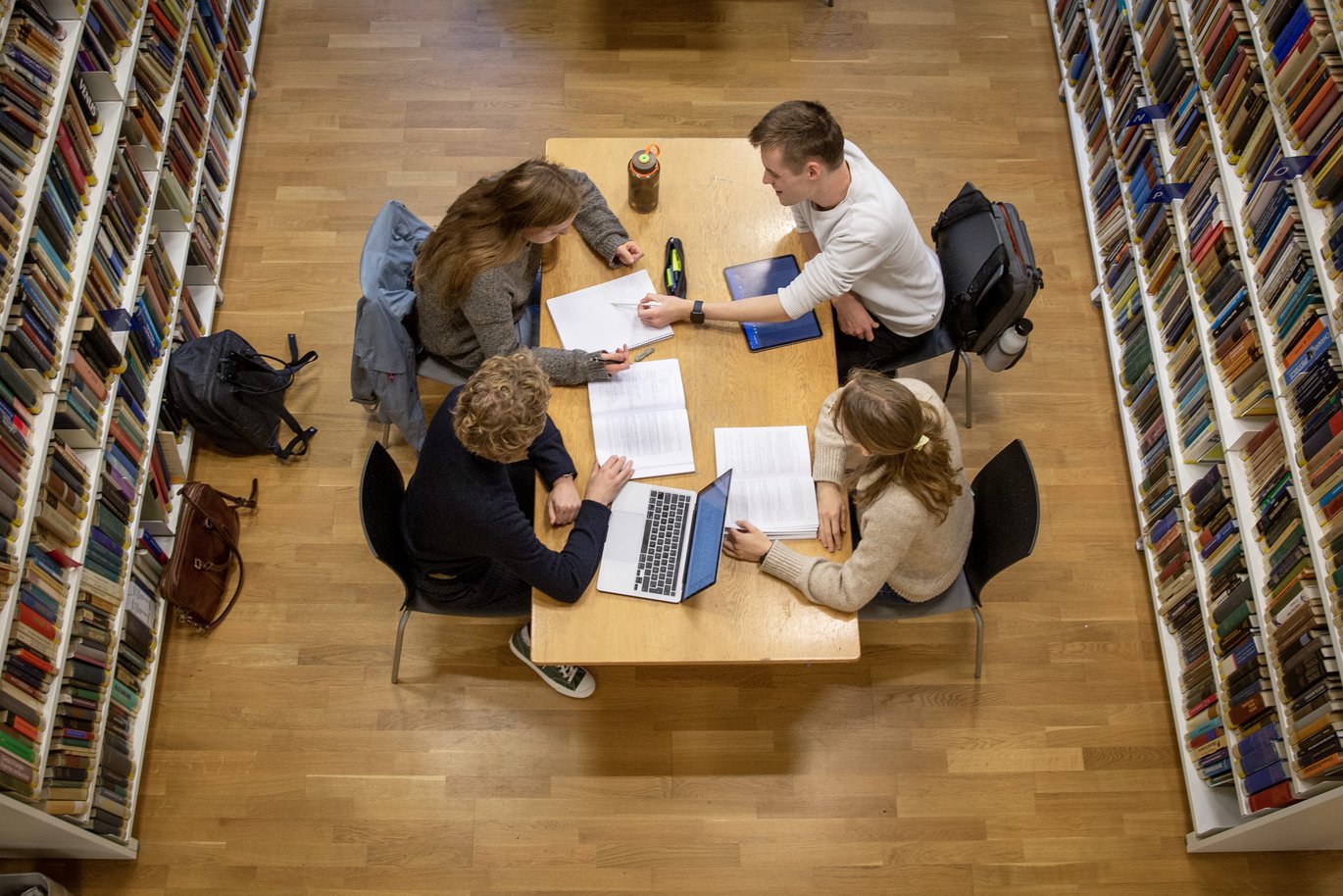Career learning from an interdisciplinary perspective
Career learning is about facilitating learning processes and activities that, among other things, help students develop the competencies to navigate their careers. Career learning can be strengthened by focusing on interdisciplinarity, as collaboration across different subject areas can provide students with a broader understanding of life, learning, and the work within their discipline.

A career is an individual’s path through education and work, while career learning refers to the process by which students gain knowledge, skills, and develop competencies to navigate this path.
By including career learning as an active part of teaching, teachers can highlight the relevance of subjects and degree programmes in relation to the labour market and society at large. Furthermore, it helps students become more aware of their competencies.
Three dimensions of career learning
Laura Cordes Felby is an Assistant Professor at CED. Her research includes transitions within and after the education system, and she has developed a page on career learning on AU Educate.
She explains that when teachers want to integrate career learning and a career perspective in their teaching, whether within a single discipline or across disciplines, they can benefit from thinking in terms of three key dimensions:
- Taking the subject into the world
- Bringing the world into the subject
- Taking the subject into the mind
“’Taking the subject into the world’ is about linking the degree programme to the labour market through practice-oriented activities. For example, this can include collaborations with companies and organisations, project placements, or writing a company thesis,” says Laura Cordes Felby.
“’Bringing the world into the subject’ involves bringing the knowledge that is generated outside AU into the teaching. For instance, this can be done by inviting guest lecturers or alumni to share how they use their subject knowledge in their career, or through case-based teaching where students work on real-world issues,” she elaborates.
“’Taking the subject into the mind’ is about developing students’ personal and professional competencies through reflection. Here, the student themself is the starting point for career learning, engaging in meta-reflections on their knowledge, skills, and competencies,” says Laura Cordes Felby about the final key dimension.
You can read a detailed description of the different dimensions on AU Educate.
Reflection and dialogue are key to interdisciplinary career learning
“Individual career development never happens in a vacuum, but in interaction and tension with people, systems, and the surrounding world. In a single-discipline context, career learning can potentially be more predictable – the degree programme may point towards relatively well-defined career paths, and knowledge, skills, and competencies are primarily linked to one specific discipline,” explains Laura Cordes Felby, and continues:
“In contrast, from an interdisciplinary perspective, career learning becomes an exercise in looking beyond your discipline. Students become aware of how their competencies mirror or differ from those of other disciplines, which provides them with a broader understanding of how different tasks and issues can be approached,” she says, thus highlighting the benefits of career learning in an interdisciplinary context.
To help students become aware of how their competencies mirror or differ from other students, they can benefit from reflection activities that support them in discovering their resources and potential, and in understanding how their competencies can interact with other students’ competencies.
“Interdisciplinary career learning works best through shared reflection and dialogue rather than individual exercises. It requires actively addressing the interplay and differences between disciplines, allowing the students to discuss and articulate their competencies in a broader context,” explains Laura Cordes Felby.
One such exercise designed for interdisciplinary competence spotting is available on AU Educate. The reflection exercise is structured as follows:
- Group formation: Students are divided into groups based on their core subject areas or their academic interests. Students without a clear match are placed in a group that is the closest to their subject area.
- Individual reflection: Each student brainstorms their academic competencies and writes keywords on post-its regarding four key elements. The keywords should be phrased in their own words.
- Sharing in groups: Each group shares their key points and places post-its on a poster. The group asks clarifying questions to deepen the.
- Sorting inputs: The group sorts through the post-its to get rid of overlaps.
- Discussion: The group discusses whether any new competencies, strengths, or weaknesses have been identified in their disciplinary perspective.
- Documentation: All group members take a photo of the poster.
- Interdisciplinary groups: Students are rearranged into new groups, each group consisting of students from at least three different subject areas and present their reflections from the first part of the exercise.
- Interdisciplinary discussion: The group discusses questions from a handout.
- Plenary debrief: The teacher facilitates a follow-up in class to highlight interdisciplinary learning perspectives.
Laura Cordes Felby emphasises that challenges in interdisciplinary collaboration can arise if certain disciplines dominate. For example, if the teacher has a particular disciplinary background or if a lot of the students come from the same discipline. Hence, it is important to be mindful of the group composition to ensure meaningful interdisciplinary dialogue.
You can find a detailed version of the activity and download handouts on AU Educate.
